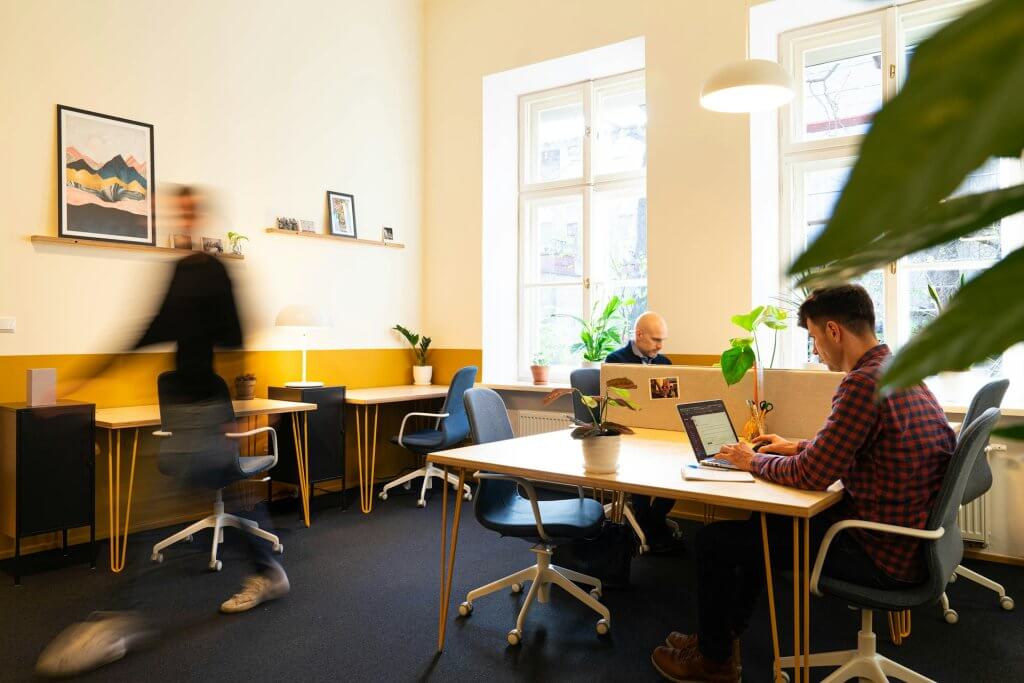Your workspace has an immense effect on how you feel, work, and interact with others. That’s why businesses nowadays are reconsidering their office environments in favor of flexible yet inspiring areas instead of rigid layouts and cubicles. Good offices don’t just contain desks and chairs – rather they create environments where ideas flourish freely.
Premium coworking spaces at CANOPY have quickly gained popularity among professionals, providing them with an environment in which people can connect, exchange ideas, and be productive without feeling trapped by traditional office setups.
The Role of Office Design in Encouraging Collaboration
Have you struggled to engage your team members? Sometimes the issue lies outside the people; sometimes it lies with the office design itself. A cramped office with high partitions may make communication seem forced while an open, well-designed workspace invites interaction between employees. Office design may either foster casual dialogue that results in breakthrough ideas or discourage it altogether and stymie collaboration.
Office design should go beyond aesthetics – it should serve a function. Open layouts encourage unplanned discussions where employees can share thoughts without formal meetings or committee sessions being scheduled in advance. Shared lounges and communal tables help employees connect more easily while breakout rooms offer space for deeper discussions.
While collaboration may not always be required for every task, some employees need quiet spaces where they can work uninterrupted. That is why great workspaces provide designated private zones, soundproof booths or library-style areas to foster concentration and ensure you get your best work done!
How Flexibility Enhances Teamwork
Work today is less structured than in years past. Teams grow, projects shift and work schedules alter drastically. So why then must office spaces stay rigid? Traditional setups typically lock employees into fixed desks with assigned seating or long-term lease agreements that do not permit flexibility or adaptability.
Flexible office environments give you options. Need to brainstorm? Join other creatives in shared spaces where creativity flows freely. Want a quiet area designed for deep work? Modern workspaces provide all sorts of support throughout the day for different forms of work activities.
Coworking spaces have taken this concept head-on by offering open seating areas, private offices, breakout rooms and event spaces that cater to various business requirements and make collaboration feel natural. This flexibility encourages greater creativity.
Overcoming Communication Barriers in Office Spaces
Ever had an innovative idea but no easy way of sharing it with colleagues? Sometimes the biggest barrier to collaboration lies not with individuals but in office design. Sometimes simply poor office design can create communication barriers that impede teams from sharing ideas, making decisions or solving issues together.
Traditional office spaces tend to isolate employees. If your team members are spread across various floors, communication may suffer, meeting rooms might often be booked up quickly so discussions get delayed, and noise levels might make focused work impossible altogether.
Good office design removes these barriers. Open layouts facilitate spontaneous discussions among employees without formal meetings being necessary. Soundproof booths offer private areas for private conversations to take place without interruption from noisy surroundings.
Accessibility should also be carefully considered when planning office design. A well-conceived office should allow its employees easy access to the resources they require – from printers and whiteboards to conference rooms. Access to such essential resources has a substantial impact on workplace efficiency.
Psychological and Social Benefits of an Effective Workspace
A poorly designed workspace can leave employees feeling depleted and disillusioned. Conversely, one that’s carefully thought through can enhance morale, creativity and job satisfaction.
An office that lacks creativity or comfort often leads to decreased employee motivation and enthusiasm for work. Harsh lighting, outdated furniture and plain walls do nothing but sap creative energy from employees working there.
Offices that emphasize comfort, aesthetics and functionality help employees feel valued. Creating environments with natural lighting, ergonomic seating, artwork and plants can boost morale or create positive vibes. Bright open spaces containing comfortable seating arrangements promote movement and interaction, helping employees feel connected to their colleagues.
Social interaction is another essential element of an office designed to function efficiently. Work is more than simply getting things done – it’s also about developing relationships. Offices featuring lounges or coffee bars give employees opportunities to meet in a relaxed setting and build connections more freely.
Conclusion
An intelligently planned workspace makes collaboration simpler, boosts productivity and supports team wellbeing. Your office layout may determine whether employees feel energized or exhausted while teams connect seamlessly or experience difficulty communicating. The impact of office spaces extends far beyond desks and walls; it influences how teams function, how employees feel and how businesses grow.
Cassia Rowley is the mastermind behind advertising at The Bad Pod. She blends creativity with strategy to make sure ads on our site do more than just show up—they spark interest and make connections. Cassia turns simple ad placements into engaging experiences that mesh seamlessly with our content, truly capturing the attention of our audience.


